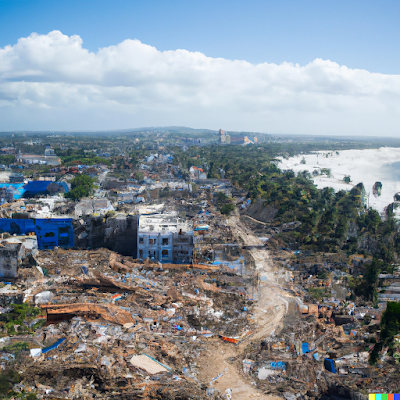featuring JAZ: More than just beaches

-------------

La dieta diaria de Juan Alfonso es una dosis de arquitectura y de pensar, y de otras cosas que probablemente no hablamos. La casualidad del tema turismo nos puso en contacto y con eso nos hicimos vecinos.
Juan Alfonso Zapata tiene su estudio de arquitectura, Common Assets, en BCN; hasta el 2008 fue miembro de Supersudaca, con quien realizó un estudio del turismo caribeño; y además trabaja la fotografía.
What do you answer when asked about sex tourism in Dominican Republic?
Assent and explain how badly it is and that it usually involves minors, drugs and violence.
More than questions, I hear uncomfortable insinuations trying to find out what’s your stance on the problem, like a middle aged doctor who started to tell me stories about his friend’s multiple vacations on the island. In such cases it’s difficult not to give a passionate answer, these allusions are not the norm but most people simply avoid the subject. There’s too little discussion about the problem of sex tourism in Dom Rep as well, the only way to deal with this problem now is to regulate it and protect and assist those who are exploited.
Could Dom. Rep. really integrate and be recognized as a fashionable, exclusive destination? If yes, how, when, and which tools are missing?
The problem is that fashionable and exclusive shouldn’t be our objectives. We should be looking beyond the hotel grounds. These are our new cities and our new destinations along with a revitalized rural landscape and thriving communities. Tourism itself is a powerful driver for any economy, just like agriculture and manufacturing were for most of the 20th century, but there are too many vultures in the Dominican tourism industry and politics. We are not achieving any of those goals if we don’t stop being a poor nation first.
Are drugs constraining tourism development in Dom.Rep.’s Southwest region? Is any quality project going to come up and survive down there?
Drugs are constraining every aspect of Dominican culture.
This is one of the poorest and more neglected regions of the country, regardless of its fertile valley right at the border with Haiti. Some argue that politicians and the military don’t do more because they also profit from the illegal traffic of narcotics, commercial goods and people across the border. It’s difficult to think of a thriving tourism industry in the region, and maybe we don’t have to. Normalized commerce with Haiti, new biofuels to substitute charcoal production, agriculture and supplies for the tourism industry, or conservation could contribute more to the economic development of these provinces. we simply don´t have a plan.

Playa El Quemaito, Prov. Barahona. Photo by: TM
What do you think about the selective 10-years tax exemptions to tourist projects given by presidential decree?
I think that current legislations are outdated and have created a sort of free trade zone for big players in the industry, while doing too little to stimulate the development of midsize local business around the supply chain of the industry, from agriculture to service providers.
The importance of the Travel and Tourism industry to our country is undeniable, and a very important asset since the industry can and should become a vehicle to build up mostly needed tools to help us understand and manage our resources and guarantee a fair return from our investments as a nation. We need to stimulate growth in all levels of the industry and reward those that get involved in the process.
Tourism industry and climate change, what comes to your mind?
Rising urbanization (formal and informal) and mass tourism are putting a lot of pressure on our shorelines, weakening its most sensible points: human settlements and everything else that hasn’t been sold yet, protected areas. Even if we avoid a massive ecological and humanitarian catastrophe, the travel and tourism industry is going to change and with it, part of our economic and social fabric. Under such dependence on the industry, we’ll probably have to reprogram our sun and beach destinations with innovative products and different economic activities to adapt to fluctuations in the amounts of travels, overnight stays and leissure inmigrants coming to Dom Rep. Otherwise we’ll end up having a lot of people unemployed and a lot of ghost towns.
Where did you last see a paradisaical location in Dom. Rep.?
I recently had a recharge of optimism while visiting Los Calabazos in Manabao, a small rural community in the mountains; they produce their own energy thru minihydros and biomass digesters and have a small ecolodge, a new school, fisheries, greehouses..... The most incredible thing is that this is a poor community and they manage to achieve all these by themselves with the financial support of national and international cooperation agencies.
The exuberance of the Dominican countryside, mountains and humid tropical forests have been traditionally overlooked in our travel and tourism plans, but I think there´s a lot more to be gain if we stimulate our productive natural landscapes a little more.
--



Comentarios